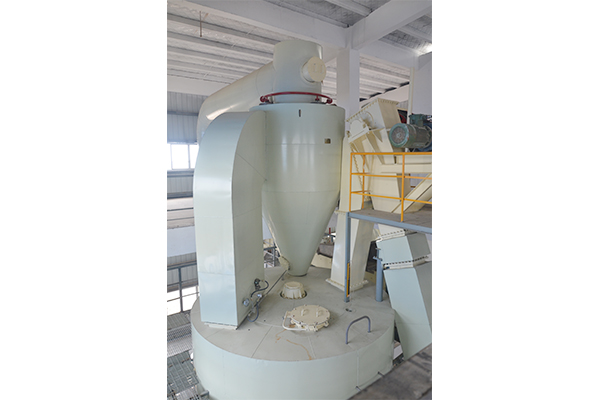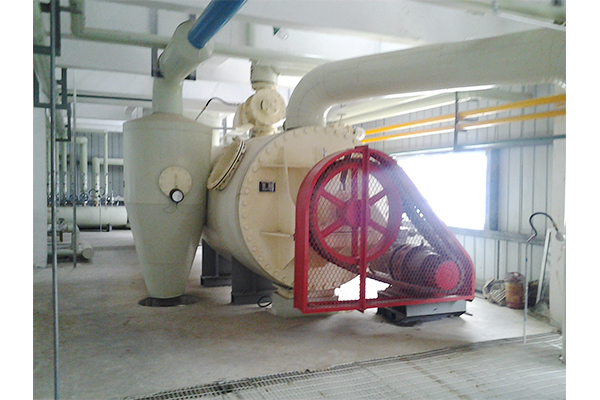Energy consumption analysis and energy-saving measures of Shakron dust removal system
Release Time : 2024-11-14
As an efficient dust removal equipment, Shakron dust removal system is widely used in various industrial fields. However, its energy consumption has always been the focus of enterprises. This article will analyze the energy consumption of Shakron dust removal system and propose corresponding energy-saving measures.
The energy consumption of Shakron dust removal system mainly comes from the fan, dust collector body and control system. Among them, the fan is the component with the largest energy consumption, and its power consumption is proportional to the air volume and air pressure. The energy consumption of the dust collector body is mainly reflected in the resistance loss of the filter material. The blockage and dust accumulation of the filter material will increase the energy consumption. In addition, although the energy consumption of the control system is relatively small, its stability and accuracy also have a certain impact on the overall energy consumption.
For the energy consumption problem of Shakron dust removal system, the following energy-saving measures can be taken:
Optimize fan selection and operation: Reasonably select the fan model and power according to actual needs to avoid energy waste caused by too large or too small fans. At the same time, variable speed operation of the fan is achieved through technical means such as frequency converters, and the air volume is adjusted according to the dust removal needs to further reduce energy consumption.
Strengthen dust collector maintenance: Regularly clean the dust collector and check the damage of the filter material to ensure that the dust collector is in the best working condition. The cleanliness and integrity of the filter material have an important impact on dust removal efficiency and energy consumption.
Introduce intelligent control systems: Through intelligent control systems such as PLC and DCS, the operating status and energy consumption of the dust collector are monitored in real time, and the working parameters are automatically adjusted to achieve energy saving and consumption reduction.
Waste heat recovery and utilization: During the dust removal process, flue gas often carries a large amount of heat energy. It is possible to consider installing a waste heat recovery device to recover the heat energy in the flue gas for heating air, preheating raw materials, etc., to achieve cascade utilization of energy.
In summary, the energy consumption analysis and energy-saving measures of the Shakron dust removal system is a systematic project that needs to be started from multiple aspects. By optimizing fan selection, strengthening dust collector maintenance, introducing intelligent control systems, and recovering and utilizing waste heat, the energy consumption of Shakron's dust removal system can be effectively reduced and the company's economic and environmental benefits can be improved.
The energy consumption of Shakron dust removal system mainly comes from the fan, dust collector body and control system. Among them, the fan is the component with the largest energy consumption, and its power consumption is proportional to the air volume and air pressure. The energy consumption of the dust collector body is mainly reflected in the resistance loss of the filter material. The blockage and dust accumulation of the filter material will increase the energy consumption. In addition, although the energy consumption of the control system is relatively small, its stability and accuracy also have a certain impact on the overall energy consumption.
For the energy consumption problem of Shakron dust removal system, the following energy-saving measures can be taken:
Optimize fan selection and operation: Reasonably select the fan model and power according to actual needs to avoid energy waste caused by too large or too small fans. At the same time, variable speed operation of the fan is achieved through technical means such as frequency converters, and the air volume is adjusted according to the dust removal needs to further reduce energy consumption.
Strengthen dust collector maintenance: Regularly clean the dust collector and check the damage of the filter material to ensure that the dust collector is in the best working condition. The cleanliness and integrity of the filter material have an important impact on dust removal efficiency and energy consumption.
Introduce intelligent control systems: Through intelligent control systems such as PLC and DCS, the operating status and energy consumption of the dust collector are monitored in real time, and the working parameters are automatically adjusted to achieve energy saving and consumption reduction.
Waste heat recovery and utilization: During the dust removal process, flue gas often carries a large amount of heat energy. It is possible to consider installing a waste heat recovery device to recover the heat energy in the flue gas for heating air, preheating raw materials, etc., to achieve cascade utilization of energy.
In summary, the energy consumption analysis and energy-saving measures of the Shakron dust removal system is a systematic project that needs to be started from multiple aspects. By optimizing fan selection, strengthening dust collector maintenance, introducing intelligent control systems, and recovering and utilizing waste heat, the energy consumption of Shakron's dust removal system can be effectively reduced and the company's economic and environmental benefits can be improved.








